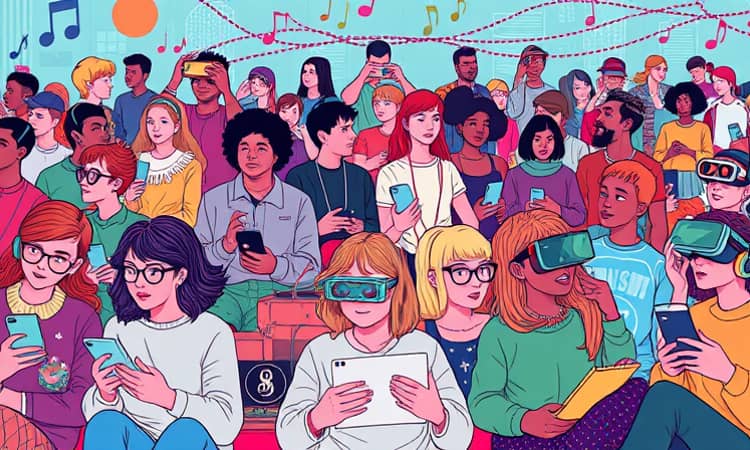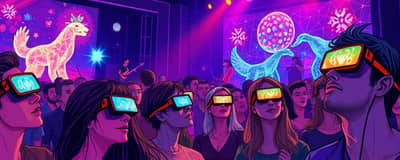Music has always been a universal language, evolving alongside technology and culture. Today, our relationship with sound is defined by screens, streams, and shared digital experiences that redefine how we connect with artists and each other.
From Physical Collections to Digital Downloads
In the mid-20th century, building a record collection meant choosing carefully at a record store and treasuring each album for its cover art and liner notes. Fans formed a tangible connection to music through vinyl, cassette tapes, and CDs—formats that offered both audio fidelity and a sense of ownership.
The late 1990s introduced the MP3 revolution. Suddenly, listeners could compress entire libraries into a single hard drive. Apple’s iTunes Store, launched in 2003, legitimized digital downloads by offering individual tracks for purchase, empowering fans to curate and carry tailored playlists on portable devices.
The Streaming Revolution
Since 2008, streaming services have upended traditional models. Platforms like Spotify, Apple Music, and YouTube Music provide seamless global music access, offering millions of tracks on demand. By 2024, streaming generated $19.3 billion worldwide and accounted for over 80% of total industry revenue.
- On-demand libraries surpass physical inventories.
- Personalized radio and playlists powered by AI.
- Mobile apps enable discovery anywhere, anytime.
- Social sharing of playlists fosters community engagement.
With 713.4 million subscribers globally—236 million of whom pay for premium tiers—streaming is the dominant force shaping listening habits. Markets in India and Nigeria are experiencing the fastest adoption, proving that digital platforms transcend geographic boundaries.
Empowering Artists and Listeners
Technology has ushered in a new era of democratization of music production. Home studios equipped with digital audio workstations allow independent artists to craft professional recordings without expensive equipment. Musicians can self-publish through distribution services, engage with fans via social media, and retain more rights over their work.
Algorithms and recommendation systems curate personalized feeds, guiding users through algorithm-driven personalized discovery journeys. Viral trends on TikTok and Instagram can propel unsigned artists into global stardom overnight, bypassing traditional label gatekeepers and radio DJs.
Economic Shifts and Market Dynamics
The financial landscape of music has shifted dramatically. While streaming revenue grows, debates around fair pay continue. Many artists receive fractions of a cent per stream, prompting calls for balanced artist compensation structures and transparent royalty models.
This table illustrates the scale of streaming’s impact, highlighting the need for sustainable revenue models that support both emerging and established artists.
Social and Cultural Impact
Music consumption today is as much about community as it is about the music itself. Fans curate shared playlists, discuss releases in online forums, and attend virtual listening parties. Independent creators showcase their art on Bandcamp or SoundCloud, fostering vibrant subcultures and niche genres.
Globalization through digital distribution has erased borders. Listeners in Tokyo, Lagos, and São Paulo can discover each other’s local scenes, contributing to an unprecedented cross-pollination of styles and sounds.
Challenges and Opportunities Ahead
Despite the triumphs of digital access, challenges remain. Copyright infringement and piracy still pose threats, while emerging technologies like AI-generated music and blockchain-based royalty tracking promise both innovation and disruption. The industry grapples with how to integrate these tools ethically and effectively.
Virtual reality concerts and augmented reality experiences are on the horizon, offering fans immersive virtual concert experiences that blend the physical and digital realms. At the same time, activists push for legislation to ensure that streaming platforms and labels adopt fairer pay structures for creators.
Looking Toward a Harmonious Future
As we stand at the intersection of art and technology, the future of music consumption will be shaped by continued innovation and a renewed focus on equitable practices. AI-driven curation will become more intuitive, while blockchain may deliver transparent royalty payments. Fans might attend concerts in holographic arenas or interact with artists in real time through virtual lobbies.
- AI-powered personalization deepens emotional connections.
- Blockchain ensures transparency and fair revenue sharing.
- Interactive experiences redefine live performance.
By embracing both technological breakthroughs and human creativity, we can cultivate an ecosystem where artists are fairly rewarded, listeners enjoy immersive virtual concert experiences, and music continues to inspire generations to come.
In the digital age, our collective soundtrack evolves with every innovation, reminding us that the power of music lies not only in its melodies, but in its ability to unite us across time, space, and culture.
References
- https://mdlbeast.com/xp-feed/music-industry/the-impact-of-technology-on-the-music-world
- https://www.numberanalytics.com/blog/exploring-music-consumption-entertainment-media-trends
- https://www.musicalflora.com/genres/world/evolution-global-music-digital-age/
- https://esquiresg.com/future-music-consumption-taking-shape/
- https://simplebeen.com/music-streaming-statistics/
- https://www.globalmediajournal.com/open-access/music-in-the-digital-age-musicians-and-fans-around-the-world-come-together-on-the-net.php?aid=35258
- https://www.clausiuspress.com/article/9750.html














